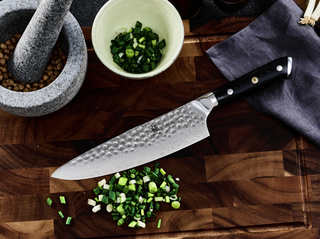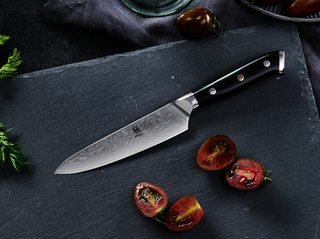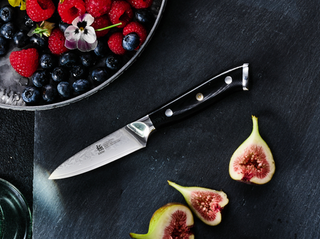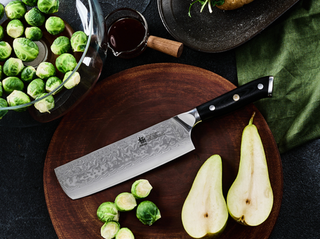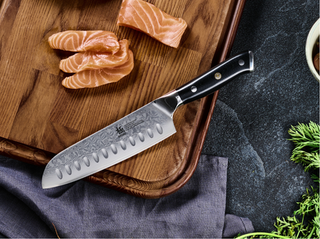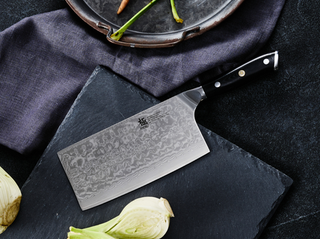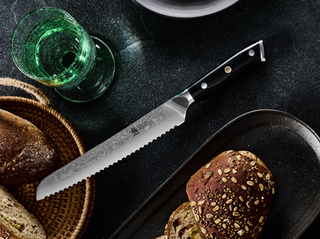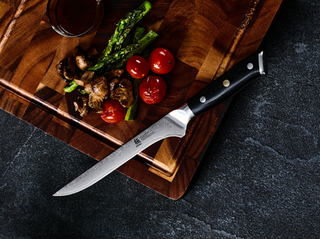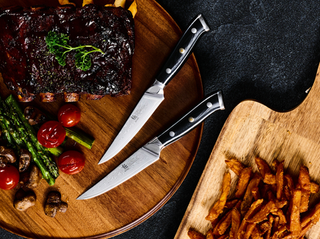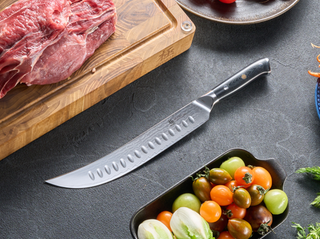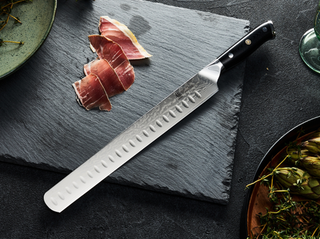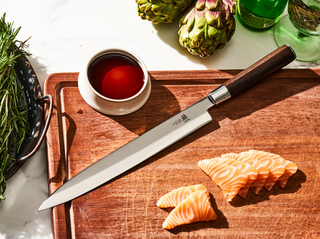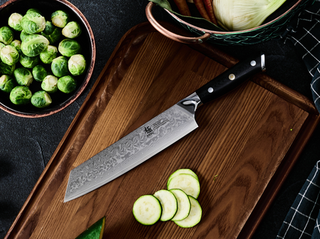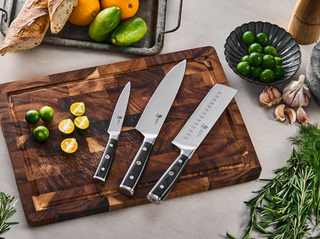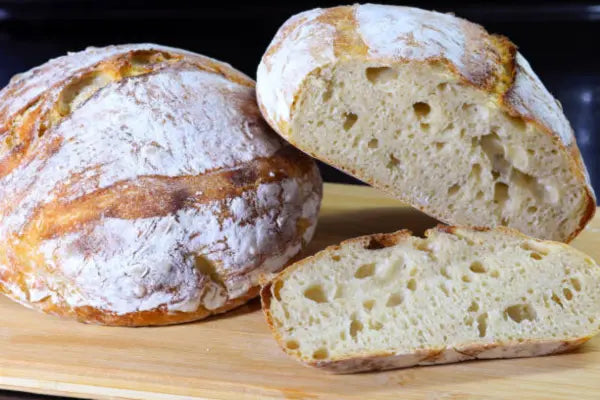If you’ve ever sliced a good loaf of sourdough by choosing the wrong knife, you understand the problem. Learning how to cut sourdough bread properly not only preserves the loaf's integrity but also enhances the eating experience. I’m passionate about baking and kitchen gear. Thus, I’ve found that using a knife the right way can dramatically improve your results.
So, let’s take a look at how to cut sourdough bread with the right set of knives.

How to Cut Sourdough Bread (Step-by-Step Process)
Step 1: Choose the Right Knife
First of all, before you touch the loaf, you need to know how to cut sourdough bread; a knife with a sharp, serrated edge. This helps ensure the slices are clean and without tears.
Step 2: Let the Bread Cool
Secondly, immediately after baking, the bread should be allowed to set. Spend about one or two hours on it. If you cut the dough early, the crumb will be squeezed too much and lose its fluffiness.
Step 3: Place the Bread on a Stable Surface
Moreover, work on the best cutting board chosen by Food Safety Experts that helps prevent accidents. A steady base allows you to slice food with more control.
Step 4: Use a Gentle Sawing Motion
Lastly, avoid pressing hard and use the serrated bread knife when cutting sourdough bread. Use a light sawing movement to avoid smashing the bread and cutting only the crumb. The sawing motion can even enable you to cut it through in one cut.
Why the Knife Matters for Cutting Sourdough Bread
The Challenge of Crust vs. Crumb
Since sourdough bread has a tough crust and a light crumb, cutting it requires force and delicacy. Plus, tearing happens when you cut it with a knife that is not sharp.
Features of a Good Sourdough Bread Knife
- Serrated Blade: Cuts through thick crusts without crushing
- Balanced Handle: For control and safety
- Sharp Edge: For clean, effortless slicing
- Durable Steel: Stays sharp over extended use
The Best Bread Knives for Sourdough (My Top Picks)
After checking out numerous knives over the years, I am still impressed by Kyoku bread knives. All of these items blend the fine quality of traditional Japanese crafts with modern technology.
1. Shogun Series 8” Damascus Steel Bread Knife
This knife is something to admire. The combination of VG10 Japanese steel and 67-layer Damascus design results in a strong and good-looking blade. Besides, it barely breaks the crusty bread, yet it reaches its desired point in one chop. The herringbone look makes everything even more appealing.
- Ultra-sharp 8–12° edge
- Lifetime warranty
- Gorgeous G-10 fiberglass handle
2. Daimyo Series 10” 440C Steel Bread Knife
Thanks to its length, Daimyo Series adds a nice touch to loaves that are at least eight inches in diameter. The smooth cutting from the razor-sharp 13–15° edge makes it a delight to prepare sourdough bread. Furthermore, the addition of rosewood gives the handle both comfort and elegance.
- Corrosion-resistant 440C stainless steel
- Balanced for fatigue-free slicing
- Comes with its sheath and case
3. Gin Series 8” VG10 Damascus with Silver-Ion Coating
You can use this every day without any problems. Having a silver-ion coating, the knife keeps the slices bacteria-free, and the sharp point lets you easily slice any loaf.
- Rockwell hardness: 58–60
- Minimal resistance slicing
- Ideal for home chefs
Specialty Knife Sets for Every Home Cook
Do you require more than a single knife in the kitchen? If you choose Kyoku’s Nakiri Bread Knife Set or Paring Knife Set, you receive many uses and professional-level value. The broad Nakiri blade is ideal for preparing veggies, but the 10-inch bread knife is suitable for cutting tough pieces of bread. Besides, there are many more uses of bread knives.
How to Store Sourdough Bread Once Cut
After you've mastered how to cut sourdough bread, the next question is storage. Don’t toss it in a plastic bag—it’ll ruin the crust. Follow these steps to store sourdough bread once you cut it:
- Let the cut side rest on a wooden board.
- Wrap loosely in a clean towel.
- You can store the slices in the freezer and toast them each time you want them.
As a result, your bread stays fresh and delicious for a long time.

Conclusion: How to cut sourdough bread
Besides the cutting technique, having a proper knife is very important for sourdough bread. If you rely on the proper tools, all your crispy and chewy bits will be saved.
Tradition, accuracy, and beauty are all found in Kyoku’s serrated knives. Trying them will convince you that nothing else compares.
You might also be interested in how to do a brunoise cut, so you can cut cantaloupe into perfect squares
FAQs About Cutting and Storing Sourdough Bread
1. How to cut sourdough bread without crushing it?
Cut with a sharp bread knife using a gentle back-and-forth motion. Allow the knife to make the difficult cuts.
2. Why does sourdough bread need to cool before slicing?
Cutting the hot bread will result in a crumb that is sticky and not very pleasant. Thus, never cut the bread before an hour has passed.
3. What kind of knife is best for sourdough bread?
An excellent option is a serrated knife with a sharp, long blade, just as Kyoku’s bread knives have.
4. Can I use a regular kitchen knife for sourdough?
Technically, yes, although this cut is unlikely to be clean and could damage the bread. In contrast, you will find serrated knives to be much better.
5. How often should I sharpen my sourdough bread knife?
You won’t have to sharpen a serrated knife as often as you would other knives. However, clean your tools after every use and sharpen them regularly as well.
So, are you ready to upgrade your bread-cutting game? Visit kyokuknives.com to explore our full collection of Japanese bread knives. Your perfect slice starts here. So, enhance your knife skills with Kyoku’s high-quality knives.
